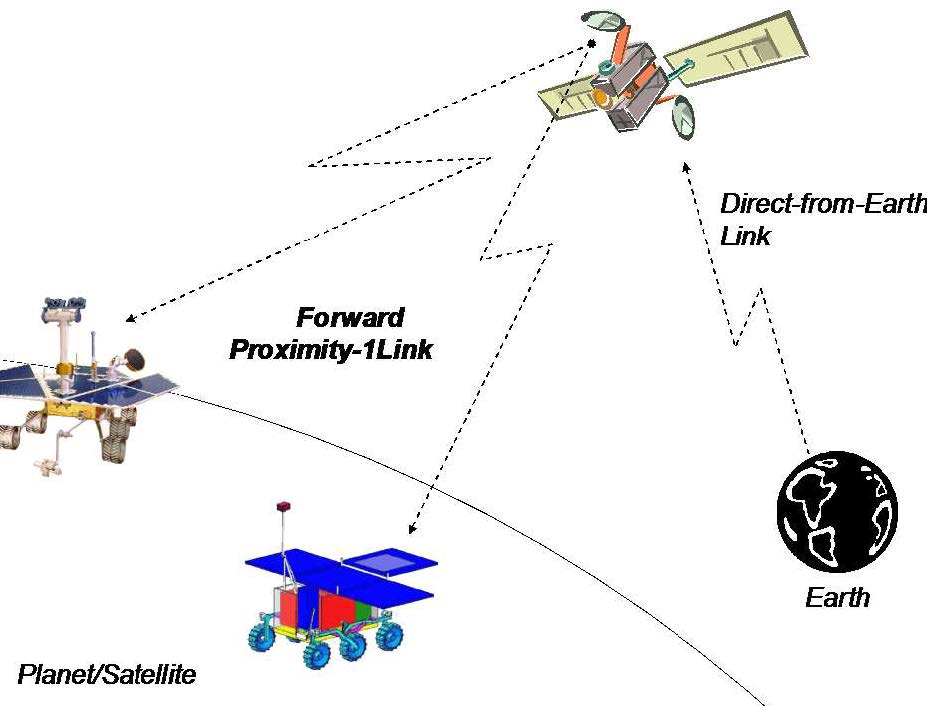Special | A | B | C | D | E | F | G | H | I | J | K | L | M | N | O | P | Q | R | S | T | U | V | W | X | Y | Z | ALL
P |
|---|
Physical-layer security | ||||
|---|---|---|---|---|
References
| ||||
Physical unclonable function (PUF) | ||||
|---|---|---|---|---|
Physical unclonable functions (PUFs, see Definition 1) serve as a physical and unclonable alternative to digital cryptographic keys. Definition 1: Physical unclonable function (PUF) [GASA20]
A device that exploits inherent randomness introduced during manufacturing to give a physical entity a unique “fingerprint” or trust anchor. Think of a PUF as a keyed hash function, where the key is built-in and unique due to manufacturing variations [GASA20].
Types of PUFs include 1️⃣ optical PUFs, 2️⃣ arbiter PUFs, 3️⃣ memory-based intrinsic PUFs [GASA20].
Watch a high-level introduction to SRAM PUF: References
| ||||
Proximity-1 Space Link Protocol | ||||||||||||
|---|---|---|---|---|---|---|---|---|---|---|---|---|
Proximity-1 covers the data link layer [CCS20d] and physical layer [CCS13b]. Proximity-1 enables communications among probes, landers, rovers, orbiting constellations, and orbiting relays in a proximate environment, up to about 100,000 km [CCS13c]. These scenarios are devoid of manual intervention from ground operators, and furthermore, resources such as computational power and storage are typically limited at both ends of the link. In fact, Proximity-1 has been field-tested in the 2004-2005 Mars missions; see Figs. 1-2 for illustration.
In contrast, the AOS/TC/TM Space Data Link Protocols are meant for Earth-deep space links, over extremely long distances. Proximity-1 supports symbol rates of up to 4,096,000 coded symbols per second. Designed for the Mars environment, the physical Layer of Proximity-1 only uses UHF frequencies [CCS13b, Sec. 1.2]. The frequency range consists of 60 MHz between 390 MHz to 450 MHz with a 30 MHz guard-band between forward and return frequency bands, specifically 435-450 MHz for the forward channel and 390-405 MHz for the return channel [CCS13b, Sec. 3.3.2]. References
| ||||||||||||
Public-key cryptography | ||||||||||
|---|---|---|---|---|---|---|---|---|---|---|
Also known as asymmetric-key cryptography, public-key cryptography (PKC) uses a pair of keys called a public key and a private key for 1️⃣ encryption and decryption, as well as 2️⃣ signing and verification. Encryption and decryption For 👩 Alice to send a confidential message to 🧔 Bob,
However,
Signing and verification For 👩 Alice to assure 🧔 Bob a message really originated from her (i.e., for Bob to authenticate her message),
Definition 1: Non-repudiation [NIS13]
A service that is used to provide assurance of the integrity and origin of data in such a way that the integrity and origin can be verified and validated by a third party as having originated from a specific entity in possession of the private key (i.e., the signatory). The ability of PKC to generate and verify signatures gives rise to 📜 digital certificates, an essential feature of PKC. Digital certificates and public-key infrastructure (PKI)Suppose 👩 Alice is somebody everybody trusts.
Definition 3: Digital certificate [ENISA]
Also called a public-key certificate, a digital certificate is an electronic data structure that binds an entity (e.g., an institution, a person, a computer program, a web address) to its public key. Watch a quick introduction to digital certificates on LinkedIn Learning: Digital certificates and signing from Ethical Hacking: Cryptography by Stephanie Domas Digital certificates are only useful if we can trust their signatories. To ensure signatories and hence certificates can be trusted, PKC relies on a public-key infrastructure (PKI, see Definition 3) to work. Definition 3: Public-key infrastructure (PKI)
In ENISA’s certificate-centric definition, a PKI is a combination of policies, procedures and technology needed to manage digital certificates in a PKC scheme. In ITU-T’s [ITU19] key-centric definition, a PKI is an infrastructure able to support the management of public keys able to support authentication, encryption, integrity and non-repudiation services. Watch a quick introduction to PKI from an operational viewpoint on LinkedIn Learning: Cryptography: Public key infrastructure and certificates from CISA Cert Prep: 5 Information Asset Protection for IS Auditors by Human Element LLC and Michael Lester A PKI, as specified in the ITU-T X.509 [ITU19] standard, consist of certification authorities (CAs).
Fig. 1: A two-tier hierarchy of CAs [NCS20, p. 6]. In a 2-tier hierarchy, a root CA issues certificates to intermediate CAs, and intermediate CAs issue certificates to end entities. Intermediate CAs are often organised to issue certificates for certain functions, e.g., a technology use case, VPN, web application. Alternatively, the CAs can be organised by organisational function, e.g., user / machine / service authentication. Fig. 2: A three-tier hierarchy of CAs [NCS20, p. 6]. In a 3-tier hierarchy, there is a root CA and two levels of intermediate CAs, in which the lowest layer issues certificates to end entities. This setup is often used to give an extra layer of separation between the root CA and the intermediate issuing certificates to end entities. The number of tiers in a CA hierarchy is a balance between the level of separation required and the tolerable administration overheard. A PKI also has registration authorities (RAs).
Although the X.509 standard does not specify any validation authority (VA), a VA allows an entity to check that a certificate has not been revoked [NCS20, p. 3].
Public-key cryptosystemsAlgorithmically speaking, there is more than one way of constructing a public-key cryptosystem. Standard public-key cryptosystems: 1️⃣ Rivest-Shamir-Adleman (RSA) cryptosystem, 2️⃣ elliptic-curve cryptosystems. These cryptosystems rely on the hardness of certain computational problems for their security. The hardness of these computational problems has come under threat of quantum computers and quantum algorithms like Shor’s algorithm. As a countermeasure, NIST has been searching for post-quantum cryptography (PQC, also called quantum-resistant cryptography). As of writing, there are three PQC candidates. References
| ||||||||||


